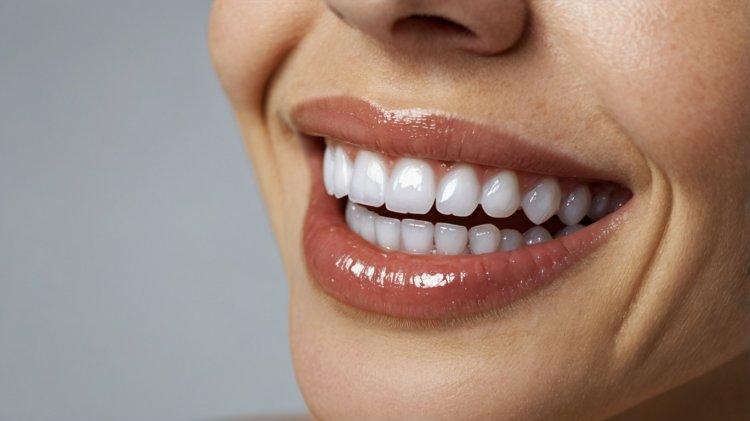Natural Teeth Whitening: Effective Methods to Brighten Your Smile at Home
Want a whiter, brighter smile without chemicals? This comprehensive guide explores natural teeth-whitening methods, from oil pulling and baking soda to dietary changes. Learn safe, effective ways to remove stains, maintain oral hygiene, and prevent discoloration for a radiant smile.

A bright, white smile is a universal sign of good health and hygiene. While professional treatments are effective, they can be expensive and involve chemicals that some people prefer to avoid. Thankfully, there are natural and safe ways to whiten your teeth at home using everyday ingredients and good oral care practices. In this guide, we’ll explore proven techniques, tips for preventing stains, and dietary habits that contribute to a healthier, whiter smile.
1. Understanding Why Teeth Discolor
Teeth can lose their sparkle for several reasons, including:
- Diet: Consuming dark-colored beverages like coffee, red wine, or soda.
- Smoking: Tobacco use stains teeth over time.
- Aging: Enamel thins with age, exposing the yellow dentin underneath.
- Poor Oral Hygiene: Plaque and tartar buildup can make teeth appear discolored.
- Enamel Erosion: Acidic foods and drinks can wear down enamel, making teeth more prone to stains.
2. Natural Teeth Whitening Methods
A. Practice Oil Pulling
Oil pulling is an ancient Indian practice that involves swishing oil in your mouth to reduce bacteria and plaque, which can contribute to yellow teeth.
- How to Do It:
- Take 1 tablespoon of coconut oil (or sesame oil).
- Swish it around your mouth for 15–20 minutes.
- Spit it out into a trash can to avoid clogging your pipes.
- Rinse your mouth with water and brush your teeth as usual.
Why It Works: Coconut oil contains lauric acid, which reduces inflammation and kills harmful bacteria in the mouth.
B. Brush with Baking Soda
Baking soda is a natural abrasive that can scrub away surface stains.
- How to Use It:
- Mix 1 teaspoon of baking soda with 2 teaspoons of water to form a paste.
- Brush your teeth with the mixture 2–3 times per week.
Scientific Backing: Studies have shown that toothpaste with baking soda is effective at removing stains and improving overall dental health.
C. Use Hydrogen Peroxide
Hydrogen peroxide is a natural bleaching agent found in many commercial whitening products.
- How to Use It Safely:
- Mix equal parts of 3% hydrogen peroxide and water.
- Use the solution as a mouthwash before brushing.
- Alternatively, create a paste with hydrogen peroxide and baking soda for occasional use.
Caution: Overuse can erode enamel, so limit this practice to a few times per week.
D. Incorporate Whitening Fruits
Some fruits contain natural enzymes that may help whiten teeth.
- Strawberries: Combine mashed strawberries with baking soda to create a natural whitening paste.
- Pineapple: Bromelain, an enzyme in pineapple, may help remove surface stains.
Note: Use these methods sparingly to avoid enamel erosion.
E. Maintain Good Oral Hygiene
Consistent brushing and flossing can prevent plaque buildup and remove surface stains.
- Brush twice daily using a fluoride toothpaste.
- Floss regularly to clean between teeth.
- Visit your dentist for regular cleanings and checkups.
3. Preventing Tooth Stains
A. Limit Staining Foods and Drinks
- Reduce consumption of coffee, tea, red wine, and soda.
- Use a straw to minimize contact with your teeth when consuming staining beverages.
- Brush your teeth or rinse with water after eating dark-colored foods or drinks.
B. Avoid Tobacco
Smoking and chewing tobacco are major contributors to tooth discoloration. Quitting these habits can dramatically improve your smile and overall health.
C. Reduce Sugar Intake
Sugar feeds harmful bacteria in your mouth, which can lead to plaque buildup and stains. Opt for fresh fruits and vegetables instead of sugary snacks.
D. Boost Calcium Intake
Calcium-rich foods like milk, cheese, and broccoli strengthen enamel and protect teeth from discoloration caused by enamel erosion.
4. Myths About Natural Teeth Whitening
Several DIY methods are popular but lack scientific evidence or may even harm your teeth:
- Activated Charcoal: While marketed as a whitening agent, it can be abrasive and damage enamel.
- Fruit Peels: Rubbing banana or lemon peels on teeth has no proven benefits.
- Apple Cider Vinegar: Its high acidity can erode enamel and lead to decay.
5. Frequently Asked Questions
Q1: What causes teeth to look yellow?
Teeth appear yellow due to staining substances, plaque buildup, or thinning enamel that reveals the yellow dentin beneath.
Q2: How quickly can natural whitening methods show results?
Natural remedies like baking soda or oil pulling may take a few weeks of consistent use to show noticeable results.
Q3: Is there a substitute for brushing teeth?
Brushing is irreplaceable, but rinsing with water or chewing sugar-free gum can help maintain oral health when brushing isn’t possible.
Q4: Can I overuse whitening methods?
Yes. Excessive use of abrasive or acidic remedies can erode enamel and cause sensitivity. Stick to recommended frequencies.
Conclusion
Achieving a brighter smile doesn’t have to involve harsh chemicals or expensive treatments. Natural remedies like oil pulling, baking soda, and dietary adjustments can help you whiten your teeth safely and effectively. However, consistency and good oral hygiene remain key to long-lasting results.
If you’re dealing with severe discoloration, consult your dentist for professional whitening options tailored to your needs.










